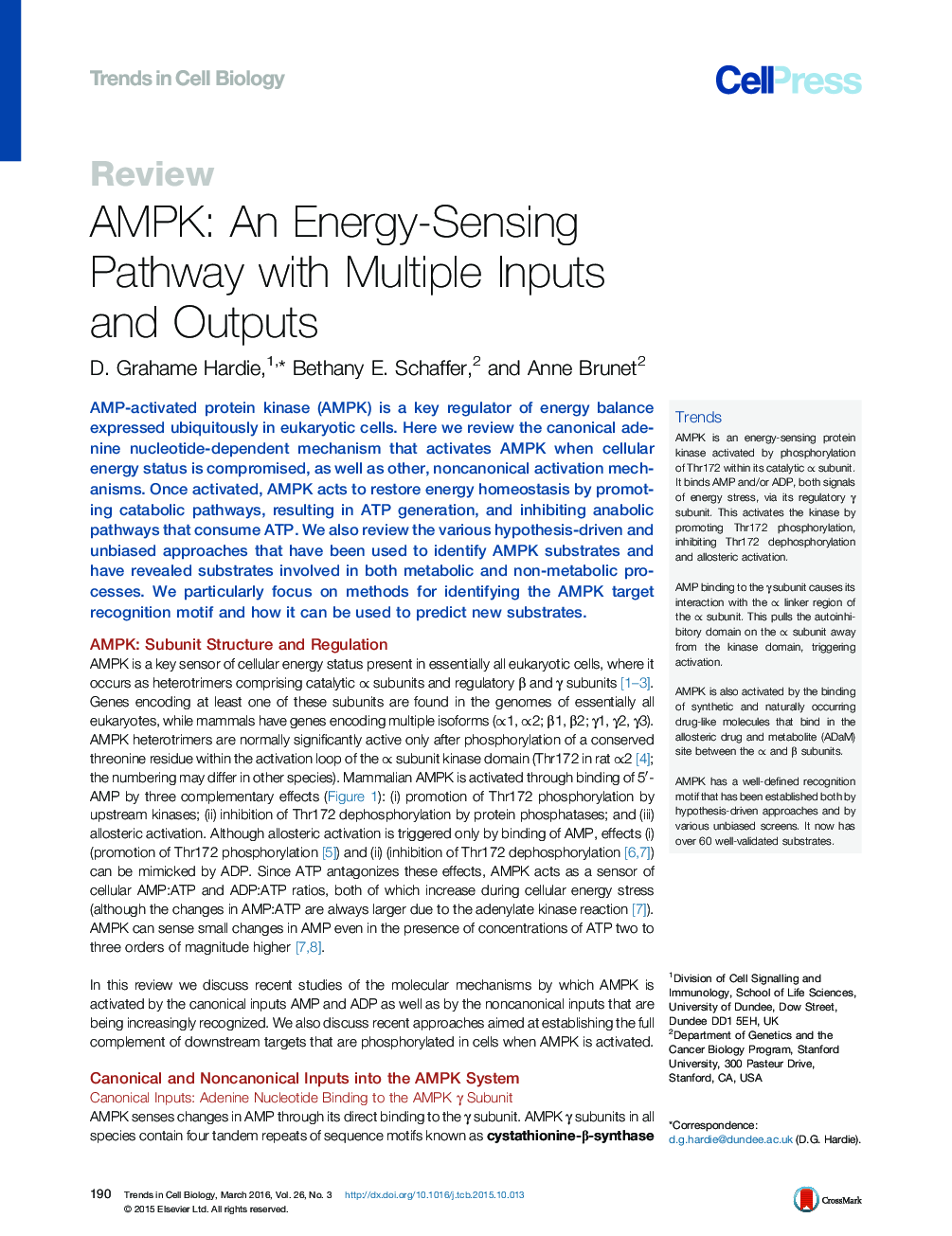| Article ID | Journal | Published Year | Pages | File Type |
|---|---|---|---|---|
| 2204345 | Trends in Cell Biology | 2016 | 12 Pages |
AMP-activated protein kinase (AMPK) is a key regulator of energy balance expressed ubiquitously in eukaryotic cells. Here we review the canonical adenine nucleotide-dependent mechanism that activates AMPK when cellular energy status is compromised, as well as other, noncanonical activation mechanisms. Once activated, AMPK acts to restore energy homeostasis by promoting catabolic pathways, resulting in ATP generation, and inhibiting anabolic pathways that consume ATP. We also review the various hypothesis-driven and unbiased approaches that have been used to identify AMPK substrates and have revealed substrates involved in both metabolic and non-metabolic processes. We particularly focus on methods for identifying the AMPK target recognition motif and how it can be used to predict new substrates.
TrendsAMPK is an energy-sensing protein kinase activated by phosphorylation of Thr172 within its catalytic α subunit. It binds AMP and/or ADP, both signals of energy stress, via its regulatory γ subunit. This activates the kinase by promoting Thr172 phosphorylation, inhibiting Thr172 dephosphorylation and allosteric activation.AMP binding to the γ subunit causes its interaction with the α linker region of the α subunit. This pulls the autoinhibitory domain on the α subunit away from the kinase domain, triggering activation.AMPK is also activated by the binding of synthetic and naturally occurring drug-like molecules that bind in the allosteric drug and metabolite (ADaM) site between the α and β subunits.AMPK has a well-defined recognition motif that has been established both by hypothesis-driven approaches and by various unbiased screens. It now has over 60 well-validated substrates.
